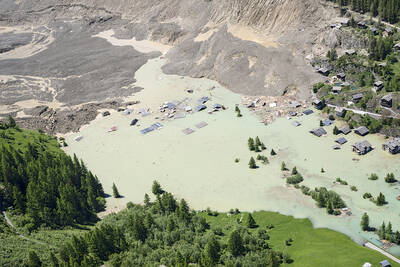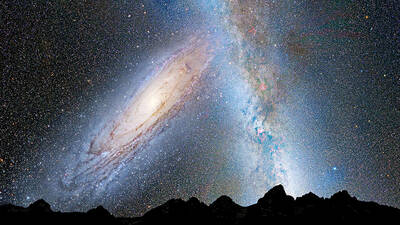An excavation has struck archeological gold with a discovery that might solve the mystery of where the Queen of Sheba of biblical legend derived her fabled treasures.
Almost 3,000 years ago, the ruler of Sheba, which spanned modern-day Ethiopia and Yemen, arrived in Jerusalem with vast quantities of gold to give to King Solomon. Now an enormous ancient goldmine, together with the ruins of a temple and the site of a battlefield, have been discovered in her former territory.
Louise Schofield, an archeologist and former British Museum curator, who headed the excavation on the high Gheralta Plateau in northern Ethiopia, said: “One of the things I’ve always loved about archeology is the way it can tie up with legends and myths. The fact that we might have the Queen of Sheba’s mines is extraordinary.”
An initial clue lay in a 6m stone stele (or slab) carved with a sun and crescent moon, the “calling card of the land of Sheba,” Schofield said.
“I crawled beneath the stone and came face to face with an inscription in Sabaean, the language that the Queen of Sheba would have spoken,” she said.
On a mound nearby she found parts of columns and finely carved stone channels from a buried temple that appears to be dedicated to the moon god, the main deity of Sheba, an 8th century BC civilization that lasted 1,000 years. It revealed a victory in a battle nearby, where Schofield excavated ancient bones.
Although local people still pan for gold in the river, they were unaware of the ancient mine. Its shaft is buried about 1.2m down, in a hill above which vultures swoop. An ancient human skull is embedded in the entrance shaft, which bears Sabaean chiseling.
Sheba was a powerful incense-trading kingdom that prospered through trade with Jerusalem and the Roman empire.
The queen is immortalized in the Koran and the Bible, which describes her visit to Solomon “with a very great retinue, with camels bearing spices, and very much gold and precious stones ... Then she gave the king 120 talents of gold and a very great quantity of spices.”
Although little is known about her, the queen’s image inspired medieval Christian mystical works in which she embodied divine wisdom, as well as Turkish and Persian paintings, Handel’s oratorio Solomon and Hollywood films. Her story is still told across Africa and Arabia, and the Ethiopian tales are immortalized in the holy book the Kebra Nagast.
Hers is said to be one of the world’s oldest love stories. The Bible says she visited Solomon to test his wisdom by asking him several riddles.
Legend has it that he wooed her and that descendants of their child, Menelik — son of the wise — became the kings of Abyssinia.
Schofield will begin a full excavation once she has the funds and hopes to establish the precise size of the mine, whose entrance is blocked by boulders.
Tests by a gold prospector, who alerted her to the mine, show that it is extensive, with a proper shaft and tunnel big enough to walk along.
Schofield was instrumental in setting up the multinational rescue excavations at the Roman city of Zeugma on the Euphrates before it was flooded for the Birecik Dam. Her latest discovery was made during her environmental development work in Ethiopia, an irrigation, farming and eco-tourism project on behalf of the Tigray Trust, a charity she founded to develop a sustainable lifestyle for 10,000 inhabitants around Maikado, where people eke out a living from subsistence farming.
Sean Kingsley, archeologist and author of God’s Gold, said: “Where Sheba dug her golden riches is one of the great stories of the Old Testament. Timna in the Negev desert is falsely known as ‘King Solomon’s Mines,’ but anything shinier has eluded us.”
“The idea that the ruins of Sheba’s empire will once more bring life to the villages around Maikado is truly poetic and appropriate. Making the past relevant to the present is exactly what archeologists should be doing,” Kingsley said.

The collapse of the Swiss Birch glacier serves as a chilling warning of the escalating dangers faced by communities worldwide living under the shadow of fragile ice, particularly in Asia, experts said. Footage of the collapse on Wednesday showed a huge cloud of ice and rubble hurtling down the mountainside into the hamlet of Blatten. Swiss Development Cooperation disaster risk reduction adviser Ali Neumann said that while the role of climate change in the case of Blatten “still needs to be investigated,” the wider impacts were clear on the cryosphere — the part of the world covered by frozen water. “Climate change and

Poland is set to hold a presidential runoff election today between two candidates offering starkly different visions for the country’s future. The winner would succeed Polish President Andrzej Duda, a conservative who is finishing his second and final term. The outcome would determine whether Poland embraces a nationalist populist trajectory or pivots more fully toward liberal, pro-European policies. An exit poll by Ipsos would be released when polls close today at 9pm local time, with a margin of error of plus or minus 2 percentage points. Final results are expected tomorrow. Whoever wins can be expected to either help or hinder the

DENIAL: Musk said that the ‘New York Times was lying their ass off,’ after it reported he used so much drugs that he developed bladder problems Elon Musk on Saturday denied a report that he used ketamine and other drugs extensively last year on the US presidential campaign trail. The New York Times on Friday reported that the billionaire adviser to US President Donald Trump used so much ketamine, a powerful anesthetic, that he developed bladder problems. The newspaper said the world’s richest person also took ecstasy and mushrooms, and traveled with a pill box last year, adding that it was not known whether Musk also took drugs while heading the so-called US Department of Government Efficiency (DOGE) after Trump took power in January. In a

It turns out that looming collision between our Milky Way and Andromeda galaxies might not happen after all. Astronomers on Monday said that the probability of the two spiral galaxies colliding is less than previously thought, with a 50-50 chance within the next 10 billion years. That is essentially a coin flip, but still better odds than previous estimates and farther out in time. “As it stands, proclamations of the impending demise of our galaxy seem greatly exaggerated,” the Finnish-led team wrote in a study appearing in Nature Astronomy. While good news for the Milky Way galaxy, the latest forecast might be moot